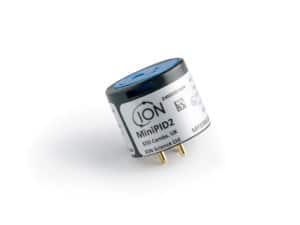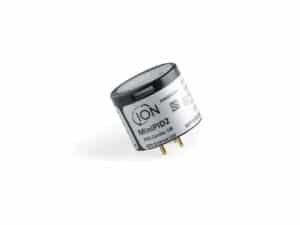Gas Fact Sheets
ION Science Gas Fact Sheets are intended provide those dealing with hazardous gases, an understanding of the gas and the detection capabilities that our gas detectors offer to help you strengthen your safety assessment.
Home » Gas and Leak Detectors » Resource Center » Gas Fact Sheets
ION Science Gas Fact Sheets are intended provide those dealing with hazardous gases, an understanding of the gas and the detection capabilities that our gas detectors offer to help you strengthen your safety assessment.
The ION Science acetone gas factsheet provides crucial information on why we use acetone and ways of detecting acetone to limit exposure risk.
The ION Science ammonia gas factsheet provides crucial information on ammonia exposure and ways of detecting ammonia in the environment.
The ION Science benzene gas factsheet provides crucial information on benzene exposure and ways of detecting benzene for workplace exposure limits (WEL).
The ION Science 1,3-butadiene gas factsheet provides crucial information on 1-3-butadiene exposure and ways of detecting butadiene in the environment.
The ION Science dichloromethane gas factsheet provides crucial information on detecting dichloromethane and how it attacks our earths ozone layer.
The ION Science ethanol gas factsheet provides crucial information on ethanol concentrations monitored in laboratories and ways of detecting ethanol.
The ION Science ethyl acetate gas factsheet provides crucial information about exposure health effects and detecting ethyl acetate within the work place.
The ION Science ethylbenzene gas factsheet provides crucial information about detecting ethylbenzene early to limit exposure risks due to its rapid effects.
The ION Science ethylene glycol gas factsheet provides crucial information on way of detecting ethylene glycol and the primary applications it can be found.
ION Science Inc.
4153 Bluebonnet Dr.
Stafford, Texas 77477
Tel: +1 (877) 864-7710
info@ionscienceusa.com

© 2025 Ion Science USA. Ion Science is registered trademark on Ion Science Ltd
Fill out the form below and our team will get back to you shortly.
Diffusion Fixed Gas Detection Device
A diffusion gas detection device works, as the name suggests, on the diffusion principle. The sensor is exposed to the ambient air and will measure the gas by means of the diffusion principle. Diffusion means proportional spread of molecules over the available space (from high concentration to low concentration). This also means that a diffusion gas detection device is only able to measure the concentration of gases at the location where the device is located. Since there is no forced flow of the gas to be measured, this device is not suitable for taking measurements remotely, but they do accurately identify what’s present in a given location.
Pumped Fixed Gas Detection Device
Pumped instruments are equipped with a built-in sampling pump. This means that the device is constantly drawing in gases. A sampling hose may be connected to extend the reach. This means that you can take a measurement from a safe distance so you have an idea of which gases will be present in which concentration before you are exposed to this environment. This allows you to make an appropriate risk analysis and make the right strategy and PPE choices based on the measurement results. By positioning the measuring hose correctly, you can also make a correct measurement at different heights to chart all risks.
Hub Spot Submit CV form
Register your instrument placeholder for Hub Spot Form
Request a quote — HubSpot form
Please scroll to compare more OEM Sensors
Please scroll to compare all OEM Gas Sensors, tick to hide sensors to compare the most suitable variants.
| Hide | ||||||||
|---|---|---|---|---|---|---|---|---|
| Comparative specifications | 
| 
| 
| 
| 
| 
| 
| 
|
| Sensor Variant | MiniPID 2 PPM WR VOC Sensor | MiniPID 2 PPM VOC Sensor | MiniPID 2 PPB WR VOC Sensor | MiniPID 2 PPB VOC Sensor | MiniPID 2 HS VOC Sensor | MiniPID 2 10.0 eV VOC Sensor | MiniPID 2 11.7 eV VOC Sensor | MiniPID 2 PPB XF Sensor |
| Electrode Stack Colour | Blue | Blue | White | White | Red | White + Gold Spot | White | White + Filter |
| Minimum Detection Limit | 500 ppb | 100 ppb | 20 ppb | 1 ppb | 0.5 ppb | 5 ppb | 100 ppb | 1 ppb |
| Range | 0 to >10,000 ppm | 0 to 4000 ppm | 0 to >200 ppm | 0 to >40 ppm | 0 to >3 ppm | 0 to >100 ppm | 0 to >100 ppm | >40 ppm |
| Response Time T90 (s) | <3 | <3 | <8 | <8 | <12 | <8 | <8 | <12s |
| Sensitivity | >0.4 mV/ppm @ 100ppm | >0.65 mV/ppm @ 100 ppm | >5 mV/ppm | >30 mV/ppm | >600 mV/ppm | >15 mV/ppm | >1 mV/ppm | >30 mV/ppm |
| Lamp Energy | 10.6 eV | 10.6 eV | 10.6 eV | 10.6 eV | 10.6 eV | 10.0 eV | 11.7 eV | 10.6eV |
| Product Details | Product Details | Product Details | Product Details | Product Details | Product Details | Product Details | Product Details |